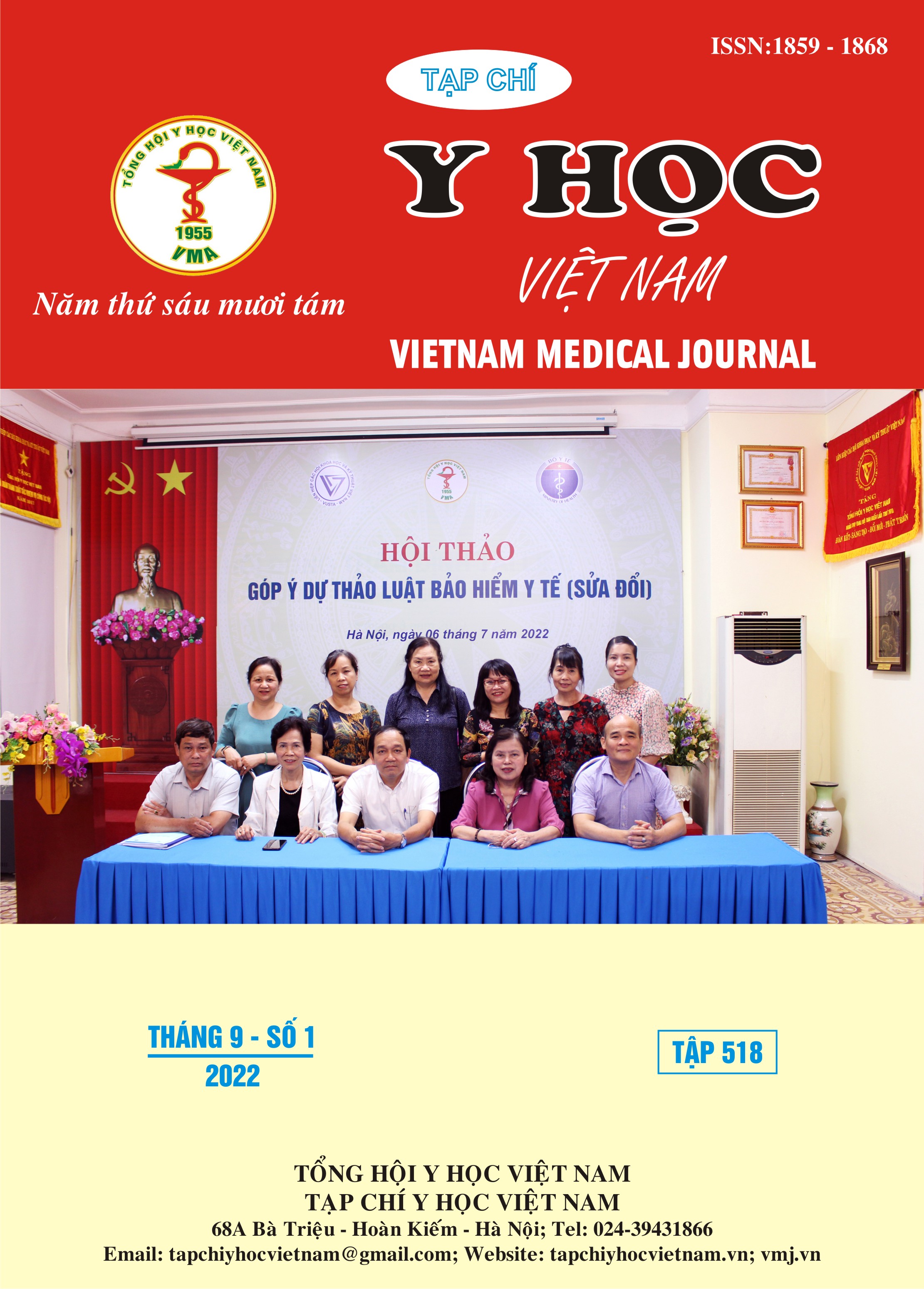STUDY OF HEMOGLOBIN DISEASES IN ADULTS WHO HAVE ALTERED EXPRESSION OF PERIPHERAL BLOOD INDEX
Main Article Content
Abstract
Background: Hemoglobin abnormalities especially thalassemia are the most frequent genetic diseases on the world. The detection of thalassemia carriers or abnormal hemoglobin in adults with changes in erythrocyte index, contributes to reducing the burden caused by this disease. Objectives: To determine the ratio of hemoglobin diseases and thalassemia gene carriers in adults with altered expression of peripheral blood index. Methods: In a descriptive cross-sectional study, 200 patients with abnormalities in peripheral red blood indices were subjected to hemoglobin electrophoresis to detect hemoglobin diseases. Thirty patients in the group of undiagnosed disease by hemoglobin electrophoresis technique were sequenced to identify thalassemia gene mutations. Results: The ratio of hemoglobin diseases and thalassemia gene carrier detected by hemoglobin electrophoresis technique was 39.5% (α thalassemia: 1.0%; β thalassemia: 19.0%, HbE: 4, 5%; β thalassemia + HbE: 14.5%; HbC: 0.5%. Gene sequencing results showed that the ratio of carrying mutations in α, β globin genes increased to 93.3% (SEA: 86.7%, SEA C.* 247>C β gene: 3.3%; SEA C-59C>T β gene: 3.3%). Conclusion: The ratio of hemoglobin abnormalities and thalassemia gene carrier is relatively high in people with changes in peripheral red blood cell index. By utilizing gene sequencing we detected a high rate of cases carrying mutations in the thalassemia gene comparing to the hemoglobin electrophoresis technique.
Article Details
Keywords
hemoglobin diseases, gene mutation, Thalassemia, hemoglobin electrophoresis, gene sequencing
References
2. Nguyễn Công Khanh (2003). Tần xuất bệnh Hemoglobin ở Việt Nam. Y Học Việt Nam, 8, Tổng hội y dược Việt Nam, tr. 11-16.
3. Nguyễn Thị Thu Hà và cộng sự (2019), Tình hình dịch tễ mang gen thalassemia/huyết sắc tố một số dân tộc tại bắc trung bộ. Y học Việt Nam 23(6), tr. 286.
4. Nguyễn Bá Chung và cộng sự (2019), Khảo sát đặc điểm mang gen thalassemia và bệnh huyết sắc tố ở 5 dân tộc thuộc vùng nam trung bộ. Tạp chí Y Học TP.HCM, 23(6), tr. 280.
5. Mahdi L S, Faraj S A, Ghali H H (2015), "Significance of red blood cell indicesin beta-thalassaemia trait", Mustansiriya Medical Journal, 14 (2), pp. 27.
6. Galanello R, Origa R (2010), "Beta-thalassemia", Orphanet journal of rare diseases, 5 (1), pp. 1-15.
7. Phan Thị Thùy Hoa, Nguyễn Duy Thăng (2011). Nhận xét bước đầu về tình hình mang gen Thalassemia ở huyện Minh Hóa, Quảng Bình. Tạp chí Y học TP.HCM,15(4), tr.327-331.
8. Nguyễn Công Khanh (2003). Tần xuất bệnh Hemoglobin ở Việt Nam. Y Học Việt Nam, 8, Tổng hội y dược Việt Nam, tr. 11-16.
9. Nguyễn Khắc Hân Hoan và cộng sự (2009). Xây dựng quy trình sàng lọc và chẩn đoán trước sinh bệnh Thalassemia. Hội thảo chuyên đề Thalassemia và rối loạn di truyền TP.HCM, tr. 63-72.
10. Ngô Diễm Ngọc và cộng sự (2012), Hội chứng phù thai do Hb Bart’s: Sàng lọc người mang gen và chẩn đoán trước sinh, Tạp chí Y Học Việt Nam tháng 9/2012, tr 159-165.


